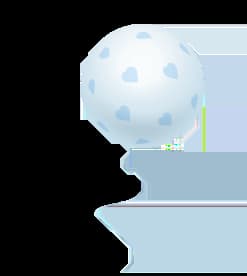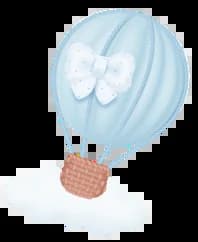Breast milk is naturally built to suit a baby's nutritional demands, and many physicians suggest it over formula feeding. People should, however, pick the feeding technique or combination of tactics that best works for them and the child, taking into account the benefits and drawbacks of both nursing and pumping, if required.
If you think breast milk seems to be the most important dietary choice for your kid but are unable to breastfeed, pumping can help. It is perfectly okay for mothers to pump their breast milk and feed it to their kids in a bottle. Pumping is an excellent technique to give your child breast milk without exposing them to it.
What are Breast Pumps?
Breast pumps are medical equipment controlled by each country's Food and Drug Administration. They can help maintain and increase a mother's milk production, rectify engorged breasts and blocked lactic ducts, or bring out flat nipples or inverted nipples to make it much easier for a nursing infant to latch on.
Breast pumps are made up of three parts:
- A breast shield that goes over the nipple.
- A pump that generates a suction to express (or pump) milk.
- A removable receptacle for collecting milk.
Pumps can be motorised or manual. Pumps powered by batteries or wires connecting to an electric socket are available. Some units even have an adaptor for usage in vehicles.
Benefits of using Breast Pumps
Babies who only get pumped breast milk do not benefit from a feedback mechanism between their bodies and breast milk. They do, however, have access to a well-organized meal that is high in healthy fats and antibodies. When premature babies stay back in the hospital, they can be fed breastmilk with a spoon till they are able to latch on to the breast.
1. Timing Authority
Caregivers can adjust the schedule of feedings by pumping milk. They can establish a plan that fits them and pump just when required. Controlling feeding times can make it easier to report to work and perhaps free significantly more time.
2. Possibility of sharing feedings
Pumping over breastfeeding may make it simpler to divide caregiving responsibilities. When just one individual breastfeeds, that person must manage all of the feeds that a baby requires, including numerous overnight waking.
Sharing feeding tasks may develop a healthy balance of childcare responsibilities. The opportunity to share feeding may provide some comfort and help the nursing individual feel more rested. This capacity to share feedings is instrumental in the postnatal period when caretakers may be weary and recuperating after childbirth.
If feasible, parents or caregivers should avoid using a bottle until breastfeeding has been established.
3. Taking care of supply concerns
Breast milk supply difficulties can be addressed by pumping breast milk. Some people prefer to pump it after every nursing session to improve their supply. If a person is concerned about a lack of milk supply, pumping might assist develop a freezer stockpile.
4. More free time
Pumping helps caregivers take a respite from dealing with months, if not years, of lack of sleep. Recovering from delivery and managing all the necessities of caring for a baby can be difficult. Pumping and conserving breast milk allows moms to go outside for a few hours, have a dinner date, or even take a vacation while providing adequate sustenance for their infant. If a person is working, pumping their breast milk helps people care for the infant to give the same nutritious breast milk.
5. Milk from a donor
Breast milk can be supplied by someone other than biological parents. Donor breast milk is given to certain newborns. Donor milk may be given to an adoptive child. Similarly, if a person cannot make enough milk, they may augment their supplies with milk from a breast-milk bank. Pumped milk could be the only source of breast milk for some newborns.
Using a Breast Pump
A decent breast pump is necessary, but understanding how to operate it correctly is even more critical for a pleasurable pumping experience. The following pointers will assist you in understanding how to utilize one.
- Carefully read the instruction booklet to become acquainted with the pump's components.
- Gently stimulate your breasts to promote the let-down reflex; thinking about your baby may trigger hormones that aid in milk flow.
- Press the constructed breast pump (breast shields) onto your breast so that the flanges of the breast shield press against your nipple.
- When you're using a manual breast pump, start pumping by pushing the handle rhythmically - it may take a little time for the milk to flow. If you're using an electronic breast pump, switch it on; the milk will start to flow within a few minutes.
- If you're using a manual breast pump, conclude by hand expressing once the milk has been produced and stored in the bottle and the milk production has slowed. Turn off the unit if it is an electric pump.
- Unscrew its breast shield and replace the bottle top when you're through pumping. The milk should be kept in the freezer.
- Disassemble the pump and wash and sterilize the components with soap and water.
- Allow them to air dry after cleaning.
Tips to make the pumping process easier
- Find a pleasant place to sit and unwind. If you are frustrated, nervous, or rushed, your let-down response (when milk is produced) may be altered. So choose a comfy location and prefer not to worry about anything else. Listening to relaxing music might be beneficial. Discover what works with you so that you might unwind.
- Before and while pumping, massage your breast. Massage and compression of the breasts can help them drain more effectively. This can be difficult if milking both breasts simultaneously, so try to wear a hands-free bra.
- Hold anything that connects you with your baby, such as a photo or video on your smartphone, or something that contains your baby's fragrance, such as a blanket or item of clothes. This might assist you in getting into the correct mind frame and triggering a let-down.
- Put the breast shield over your breast correctly. When you pump, the breast shield is the plastic cup that goes over your areola (the black circle of skin surrounding your nipple). Make sure it covers your whole nipple and areola (not just the top) and that you obtain a good seal. If this does not occur, you may feel uneasy and are less likely to get the milk you require.
- Choose the appropriate size breast protection for your breast. While pumping, the nipple should be able to move freely inside the tube of the breast shields without drawing in too much of your areola. If this occurs, or if pumping is painful, suggest a new flange size. Most pumps have varying flange diameters, so pick the optimum match.
- When utilizing an electric pump, change the speed and pressure to your comfort level. This will assist in alleviating any discomfort. The lowest level that permits milk to flow gently is recommended.
Summing Up
A breast pump can be a saviour for those who find it difficult to feed directly due to paucity of time or health issues. It helps to provide vital nutrients to babies in their first six months if mothers resume work early. Choosing the right pump can make life very easy for both mum and bub and the caregiver can ensure that the baby is fed breastmilk throughout the day. Breast pumps are a perfectly safe way of providing your baby with breastmilk around the clock. Mamy Poko Pants is your constant companion during your parenthood years and wishes you luck in the most exciting phase of your life.
FAQ's
Q. What is a breast pump, and how does it work?
Ans.A breast pump is a medical device that helps extract milk from a mother’s breast using suction. It typically includes a breast shield, a pump (manual or electric), and a container to collect milk. It supports feeding flexibility, maintains milk supply, and makes storing breast milk easier.
Q. Why should I consider using a breast pump?
Ans.Breast pumps are helpful for mothers who can’t always breastfeed directly. They allow feeding flexibility, help maintain or increase milk supply, provide milk for babies when mothers are away, and support shared caregiving. Pumping also helps mothers manage engorgement and build a milk reserve for later use.
Q. Are breast pumps safe for everyday use?
Ans.Yes, breast pumps are safe when used correctly. They are regulated medical devices designed to assist with milk expression. However, it’s important to choose the right pump, follow usage guidelines, maintain hygiene by cleaning components after each use, and ensure proper fit to avoid discomfort or nipple injuries.
Q. What are the benefits of pumping breast milk?
Ans.Pumping allows flexibility in feeding schedules, shared caregiving responsibilities, and helps working mothers continue providing breast milk. It can address supply issues, provide milk for premature or hospitalized babies, and enable storing milk for future use. It also gives mothers much-needed rest while ensuring babies get optimal nutrition.
Q. How do I choose between a manual and an electric breast pump?
Ans.Manual pumps are cost-effective, portable, and suitable for occasional use. Electric pumps, on the other hand, are faster, more efficient, and ideal for frequent pumping or working mothers. Consider your pumping needs, budget, and lifestyle to select the best option for you and your baby’s requirements.
Q. Can pumping help increase milk supply?
Ans.Yes, regular pumping after or between nursing sessions can stimulate milk production. It helps maintain supply when babies are unable to latch or during separation. Power-pumping sessions—short, frequent pumping intervals—can also improve milk output. Consistency and proper hydration are key to supporting healthy breast milk production.
Q. How should I store pumped breast milk safely?
Ans.Store pumped milk in clean, sterilized bottles or breast milk storage bags. It can stay at room temperature for up to 4 hours, in a refrigerator for 4 days, and in a freezer for 6–12 months. Always label containers with dates and use the oldest milk first.
Q. What is the best way to make pumping comfortable?
Ans.Find a relaxing spot, gently massage your breasts before pumping, and use a properly fitted breast shield. Adjust the suction and speed to a comfortable level. Listening to calming music or keeping your baby’s photo nearby can trigger the let-down reflex, making pumping smoother and more productive.
Q. When should I start pumping after childbirth?
Ans.It’s best to establish breastfeeding first, typically after 3–4 weeks, before introducing pumping. However, mothers who need to return to work sooner or have premature babies can start earlier under medical guidance. Early pumping can also help build a freezer stash or manage engorgement when milk supply increases.
Q. Can caregivers feed pumped breast milk to my baby?
Ans.Absolutely. Pumping allows caregivers, partners, or family members to share feeding duties, giving mothers time to rest or manage other responsibilities. Ensure bottles are sterilized and follow safe feeding guidelines. This shared responsibility promotes bonding between the baby and caregivers while maintaining breast milk’s nutritional benefits.
















